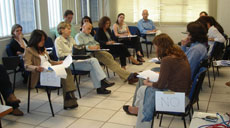What is the Semantic Web?
Published 13 years ago by David Siegel
There's a lot of confusion about what the semantic web is, exactly. There are so many definitions that I can't possibly unify everything in one article. Some people say it's all about linked data, RDF, and ontologies. Some people call it "Web 3.0." (I recently gave a keynote speech at a "Web 3.0" conference, where many of the people had confused "Web 3.0" with "Web in 3D." I'm sure many people in the audience wondered why I wasn't talking about the future 3D web and, instead, was talking about information.) Some people say it will lead us to the singularity. Rather than try to define these terms, I propose we abandon them. I propose we stop talking about complicated solutions and start talking about problems.


 We want everybody to communicate freely by crossing the barriers of language differences and cultural variety. This is the commonly agreed upon ultimate goal of the Semantic Web. How we are to realize the Semantic Web in particular is, however, another story. Typically, there are two thoughts on how to achieve this common goal. One thought is to build a web of data; the other is to build a web of agents. Nevertheless, these two thoughts approach the same goal and represent two different philosophies. This philosophical difference may eventually determine the fate of these two approaches.
We want everybody to communicate freely by crossing the barriers of language differences and cultural variety. This is the commonly agreed upon ultimate goal of the Semantic Web. How we are to realize the Semantic Web in particular is, however, another story. Typically, there are two thoughts on how to achieve this common goal. One thought is to build a web of data; the other is to build a web of agents. Nevertheless, these two thoughts approach the same goal and represent two different philosophies. This philosophical difference may eventually determine the fate of these two approaches.
Recently Commented Blog Entries